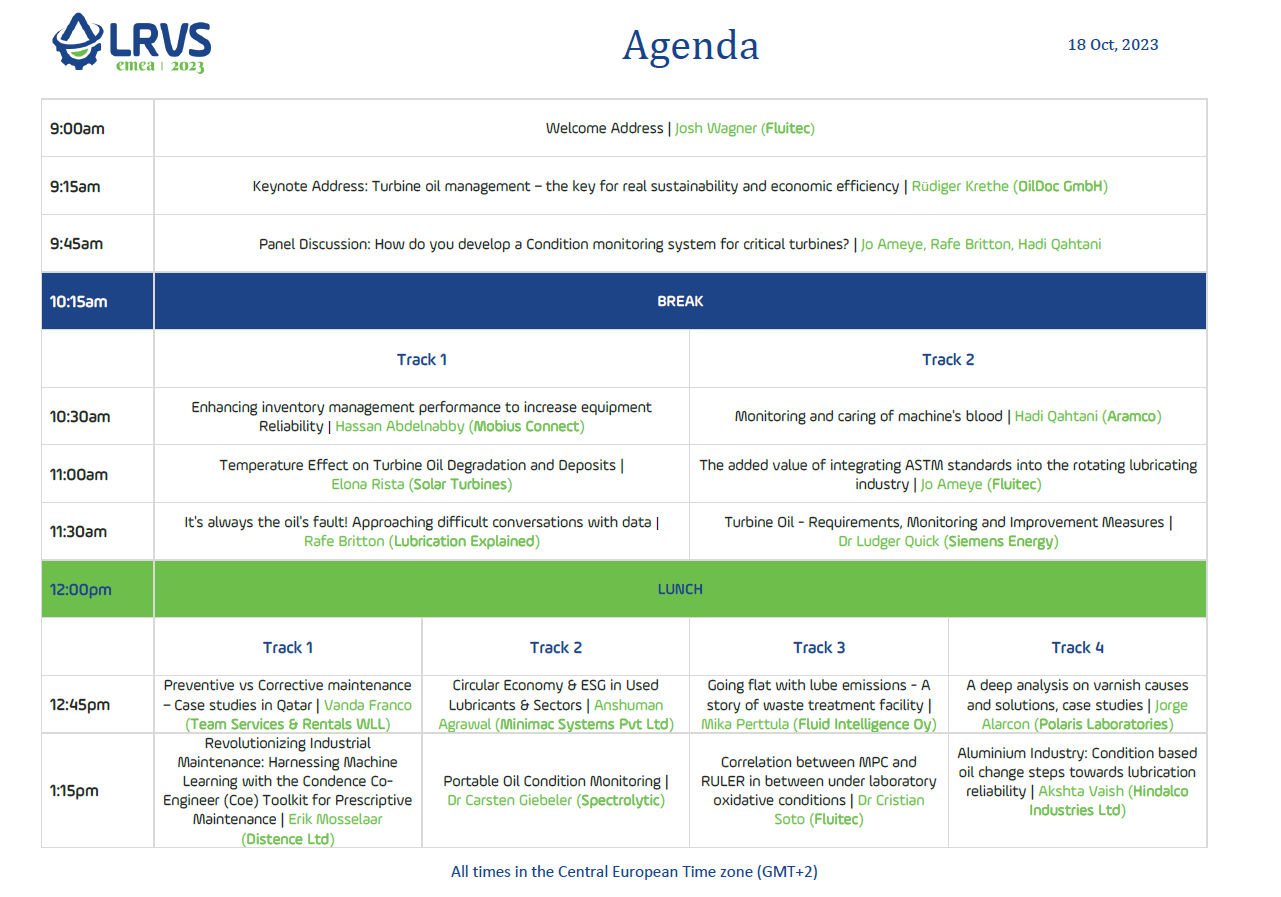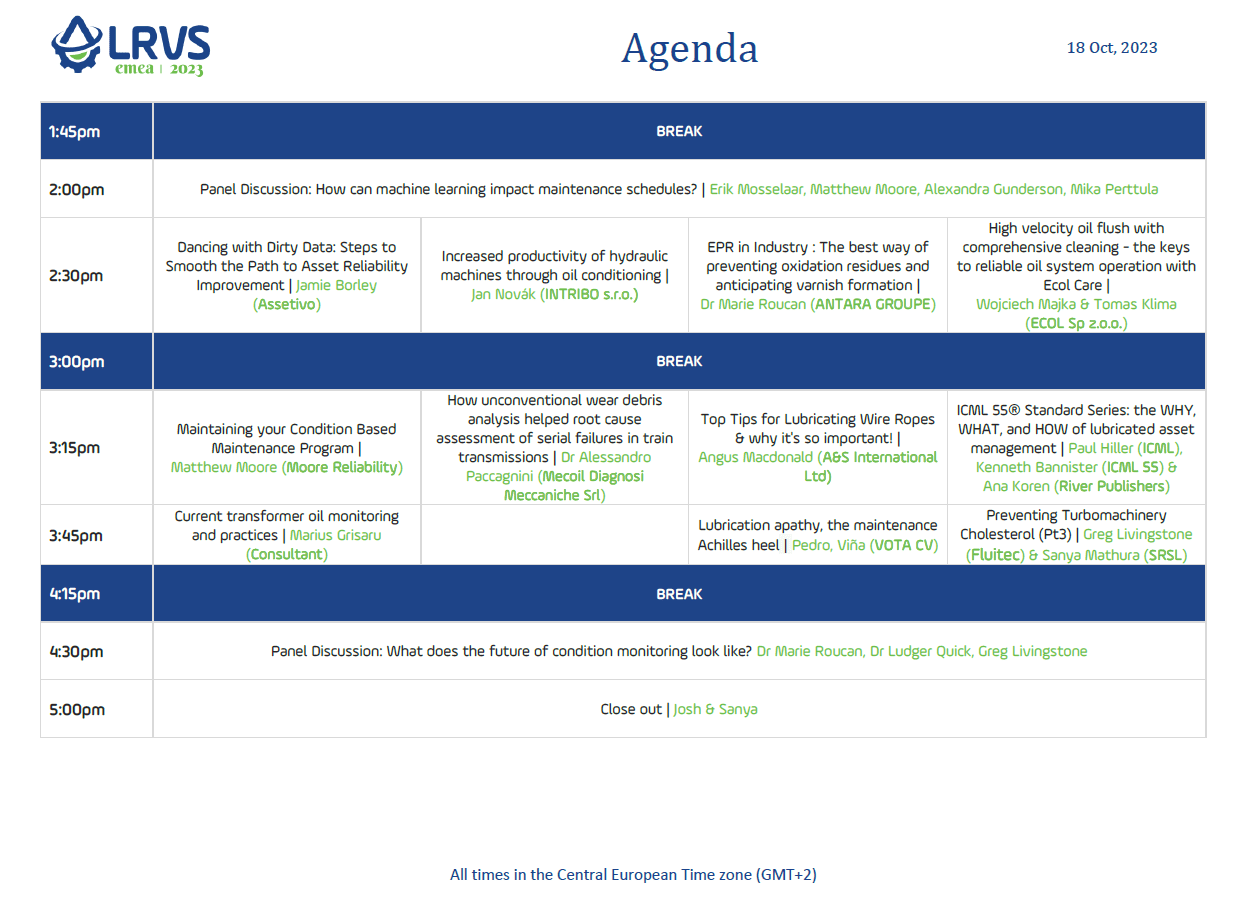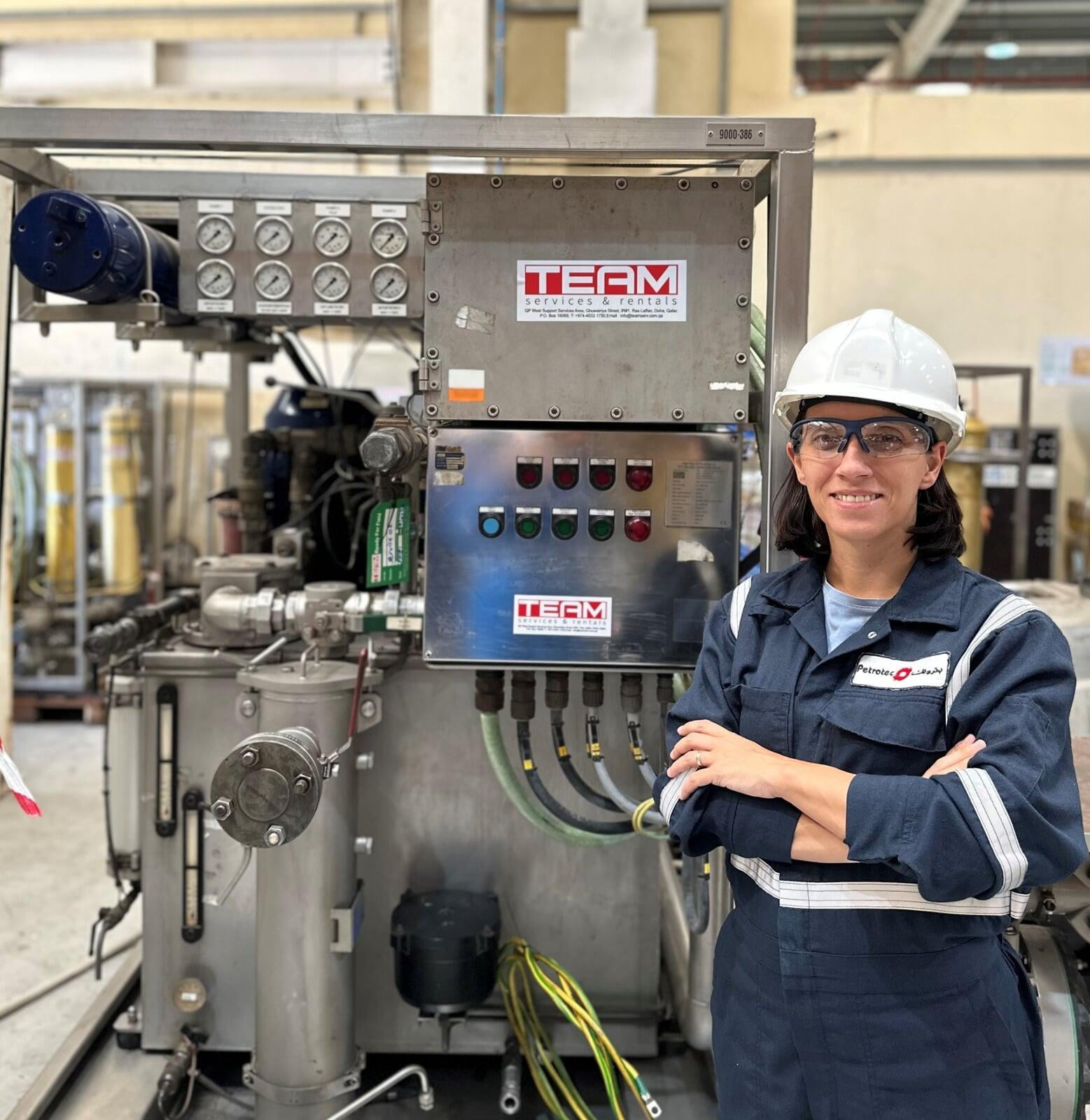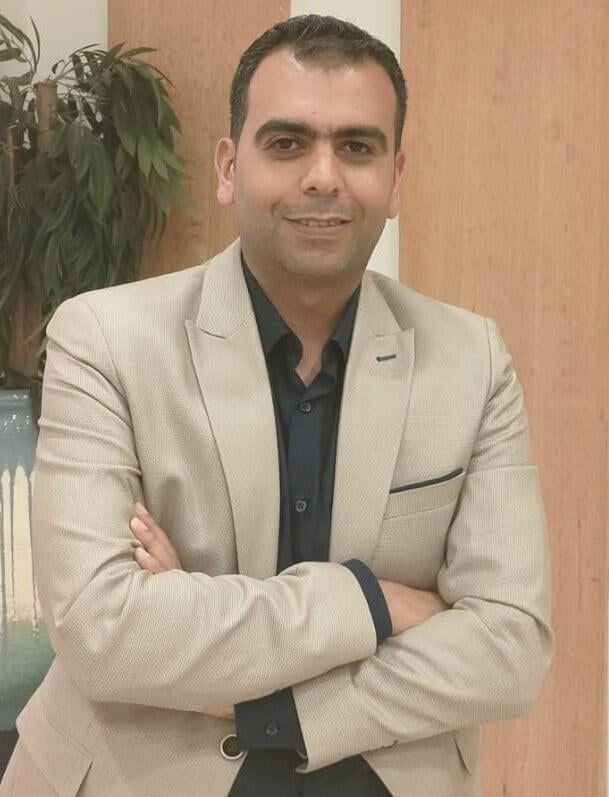Meet our LRVS 2023 EMEA Speakers!
Here's a quick look at some of our Speakers and Panelists for LRVS 2023 EMEA along with the topics they will be discussing.
Keynote Address: Turbine oil management – the key for real sustainability and economic efficiency
Long-life oils are predominantly used today for the lubrication of passenger car combustion engines. These long oil drain intervals of 30,000 kilometres in car engines, and even 100,000 kilometres or more in diesel engines of trucks used in long-distance transportation, are achieved without complicated oil management: no oil analyses, no RULER, no MPC test.
That sounds great: Long oil drain intervals, no oil condition monitoring, no sampling, no complicated laboratory reports. The question is: can this simple concept be transferred to turbine lubrication?
And if not: what is so different about the lubrication of turbines compared to that of today's high-performance engines?
The presentation uses simple facts first to show that economic operation of turbines and other production plants is not possible without professional lubrication management, especially under the challenging conditions of today, and the outstanding importance of modern oil condition monitoring and oil care concept.
Several practical examples demonstrate the power of modern analysis methods and that only the right combination of monitoring methods and the understanding of their interaction reveal the true potential. The lecture is rounded off with a number of practical tips from the author's many years of experience.
Vanda Franco
Vanda Franco
Associate Manager - Operations at
Petrotec - Team Services and Rentals
Preventive vs Corrective maintenance – Case studies in Qatar
Preventive vs Corrective maintenance – Case studies in Qatar
Qatar, a peninsula in the Persian Gulf is vulnerable to extremely stressful ambient working conditions; primarily high temperature and humidity. Under these conditions, both oxidative and thermal degradation can happen simultaneously and consistently in lubricants of turbo machinery / critical rotating equipment, which can be the main causes of oil degradation.
Condition Monitoring and Maintenance Management are holistic multi-discipline based approaches which provide significant improvements in efficiency of rotating machinery and hydraulic systems, increasing their availability, and directly enhance profitability.
There are two traditional methods of carrying out maintenance of a company’s machinery: Preventive and Corrective.
• Which one is applied by your company?
• Do your customers know the advantages of one over the other? Which one do they prefer?
In this presentation we will present different case studies where both methods have been applied in Qatar, onshore and offshore.
Jo Ameye
Jo Ameye
General Manager, Europe at Fluitec
The added value of integrating ASTM standards into the rotating lubricating industry
The added value of integrating ASTM standards into the rotating lubricating industry
The added value of integrating ASTM standards into the rotating lubricating industry
As part of reliability strategies for rotating equipment, the industry has the opportunity and as well responsibility to integrate standardized test methods and practices. As an international organization ASTM International has over the last decades being very active in developing and offering the appropriate standard methods and practices, which will fully support lubrication professionals as well OEM’s, in their day-to-day maintenance activities.
With this paper, we will dive into the world of ASTM methods that are related to condition monitoring, contamination control, flushing and cleaning specifications, lubricant selection, compatibility testing etc. A selection of methods will be discussed and highlighted in this presentation, helping lubricating professionals to maximize the use of these up-to-date methods and practices.
Hassan Abdelnabby
Hassan Abdelnabby
Mechanical Maintenance Deputy Director of AL Zeina Tissue Mill Company
Enhancing inventory management performance to increase equipment Reliability
Enhancing inventory management performance to increase equipment Reliability
During this session we will discuss how to define the critical assets and how to determine which spare parts need to be available during the expected lifetime of the equipment.
Also we will review different types of inventory items classifications and some of the basic calculations for reorder point. At the end of the session we will talk about some of the benefits of enhancing the inventory performance and the relation between it and enhancing the reliability of the equipment.
Elona Rista
Elona Rista
Product Support Manager at Solar Turbines
Temperature Effect on Turbine Oil Degradation and Deposits
Temperature Effect on Turbine Oil Degradation and Deposits
Although there are multiple degradation pathways a turbine oil faces when placed in operation, the dominant failure mode is oxidation. By analyzing a turbine oil placed under accelerated oxidation conditions in a laboratory, much can be learned about how that oil will perform when placed in service. While temperature is widely accepted as one of the primary factors contributing to oil oxidation and degradation, we set out to better understand the effects of temperature on the rate of oil degradation and deposit formation. This presentation reviews the test results of several commercially available turbine oils aged under different temperature regimes.
Rafe Britton
Rafe Britton
Technical Specialist at Lubrication Expert
It's always the oil's fault! Approaching difficult conversations with data.
It's always the oil's fault! Approaching difficult conversations with data.
If you've worked around industrial lubrication for any stretch of time, you'll have noticed one thing - that the oil gets the blame for an awfully high percentage of machine failures. In my personal experience, roughly 90% of those objections are found to be baseless. So how should we as lubrication professionals handle these difficult conversations? In this presentation we'll explore a mix of empathy, data, logic, and root cause failure analysis to make these encounters a little smoother.
Hadi Qahtani
Hadi Qahtani
Senior Engineering Consultant at Saudi Aramco
Monitoring and caring of machines blood!
Monitoring and caring of machines blood!
Monitoring and caring of machines blood!
Close monitoring and timely analysis of lubricants play vital role in minimizing machinery’s trips. Unlike vibration monitoring which normally equipped with online monitoring and protection systems, Lubricants monitoring depends heavily on sampling and lab analysis which has its challenges. The advancement nowadays in lubricants online monitoring sensors and AI will change the game, however in order to make the most use of these technologies, Lubricants professionals shall prepare for this change in terms of standard requirements, plant and DCS infrastructure, operators training, thresholds of protection, etc.
Dr Ludger Quick
Dr Ludger Quick
Chemist at Siemens Energy
Turbine Oil - Requirements, Monitoring and Improvement Measures
Turbine Oil - Requirements, Monitoring and Improvement Measures
The performance and quality of the turbine lube oil is critical to ensuring the reliability of our turbomachinery.
Siemens Energy has implemented a thorough and reliable process to ensure that the turbine lubricating oil performs as required.
This program consists of the specification of requirements for the new turbine oil, a well-proven monitoring program and the improvement measures derived from this.
This presentation will be an overview of our experience with the above Siemens Energy program.
Erik Mosselaar
Erik Mosselaar
Business Director -Partnerships at
Distence Ltd
Revolutionizing Industrial Maintenance: Harnessing Machine Learning with the Condence Co-Engineer (Coe) Toolkit for Prescriptive Maintenance
Revolutionizing Industrial Maintenance: Harnessing Machine Learning with the Condence Co-Engineer (Coe) Toolkit for Prescriptive Maintenance
The challenges in condition monitoring-based Key Performance Indicators (KPIs) such as peak-to-peak and kurtosis primarily cater to specialized professionals like vibration analysts. This alienates a wider audience of maintenance professionals who are not as specialized. We introduce Coe, Condence’s digital co-engineer. Coe is a new feature in the condence.io toolkit that aims to democratize high-end condition monitoring for a larger fleet of assets and is an advanced machine learning tool that aids in the analysis of vibration data from industrial equipment.
It does not require kinematic or RPM information and provides understandable metrics, enhancing the efficiency of maintenance professionals by providing actionable insights for proactive equipment maintenance. Real-world case studies demonstrate how Coe can detect potential issues, recommend maintenance tasks, and helps effectively avoid costly downtime, thus proving to be a valuable asset in equipment health management. Its implementation does not necessitate changes in the field and can improve overall operational efficiency by reducing repair costs and downtime.
Greg Livingstone
Greg Livingstone
Chief Innovation Officer at Fluitec
Sanya Mathura
Sanya Mathura
Managing Director at Strategic Reliability Solutions Ltd
Preventing Turbomachinery 'Cholesterol' - The Story of Varnish (Part 3)
Preventing Turbomachinery 'Cholesterol' - The Story of Varnish (Part 3)
Greg and Sanya recently released their book, "Preventing Turbomachinery 'Cholesterol' - The story of varnish published by Industrial Press Inc. In their presentation, they will be talking about some of the myths surrounding varnish.
Oil can be considered the lifeblood of our machines and practices that we employ with our machines are similar to what we do in regular life. Our machines need to be healthy (just like our bodies), so we take oil samples (similar to blood tests) and determine if we have the correct quantities of good stuff and not too much of the bad stuff.
In this session, they will discuss some key concepts which are covered in the book such as preventing deposits and a couple of the technologies which can be used to prevent varnish.
Jamie Borley
Jamie Borley
Director of Assetivo
Dancing with Dirty Data: Steps to Smooth the Path to Asset Reliability Improvement
Dancing with Dirty Data: Steps to Smooth the Path to Asset Reliability Improvement
With the ever-increasing focus on asset reliability improvement in all industrial sectors worldwide, asset management professionals are turning to CMMS or EAM work order history to understand failure modes, MTBFs, bad actors, and more to inform their decision-making. Moving beyond spreadsheets, they are now turning to Python, SQL, and Power BI to derive insights and useable information from this maintenance data. But across all sectors they are regularly disappointed with the data quality and the amount of cleaning that must take place before data is usable. This is the dirty data that prevents reliability journey progress. Here Assetivo presents a way forward for maintenance data collection that will smooth the path to future asset reliability improvement.
Jan Novák
Jan Novák
Managing Director of INTRIBO s.r.o.
Increased productivity of hydraulic machines through oil conditioning
Increased productivity of hydraulic machines through oil conditioning
Increased productivity of hydraulic machines through oil conditioning
Dr Marie Roucan
Dr Marie Roucan
R&E Manager at Antara Groupe
EPR in Industry: The best way of preventing oxidation residues and anticipating varnish formation.
EPR in Industry: The best way of preventing oxidation residues and anticipating varnish formation.
Lubricants from many others, have attracted a lot of consideration to improve their durability; enhancement of the crude oil refining process, use of better-quality oil, development of synthetic lubricants, upgrade of the additives and more.
Even if all of these improvements have been quite substantial, the past decades showed a decrease in the longevity of “in-use” lubricants mainly due to the environmental restriction and increased addition of “oxygen rich” products which have altered the stability of most base oils. Understanding the complexity behind the oxidation process is, nowadays, a key asset to increase the oil life time.
Usual strategies employed consist of physical and macro-chemical analysis of the lubricants, however, oxidation also involves the rapid formation of free radicals in “in-service” oil. EPR is a well-established technique to identify and quantify these free radicals in various types of samples. Coupled with the spin trapping method, it allows us to see highly reactive oxygen species such as peroxides as well as the decomposition of additives such as antioxidants.
We are currently using these EPR-spin trapping techniques in our industry as a tool to have a better comprehension of the degradation process of lubricants. This will allow an appreciation of the synergy between oil and additives but also monitoring the formation of radical species in order to define key performance indicators seen during the oil degradation process. By extension, these KPIs will help prevent and design specific solutions to slow down the degradation process of lubricants.
Dr Cristian Soto
Dr Cristian Soto
Chief Operations Officer and VP of R&D at Fluitec
Correlation between MPC and RULER in between under laboratory oxidative conditions
Correlation between MPC and RULER in between under laboratory oxidative conditions
Correlation between MPC and RULER in between under laboratory oxidative conditions
Antioxidants are used to protect lubricating oils from the deleterious effect of oxidation. These include increase of acid number, the formation of deposits, and possibly viscosity increase. Considering that the varnish potential of an oil is measured by the MPC protocol it is relevant to establish correlations if any between RULER trends and MPC trends for a variety of commercially available formulations under laboratory conditions.
Anshuman Agrawal
Anshuman Agrawal
Managing Director of Minimac Systems Pvt Ltd
Circular Economy & ESG in Used Lubricants & Sectors
Circular Economy & ESG in Used Lubricants & Sectors
Lubricants play an important role in keeping the machinery running smoothly and efficiently. The demands for lubricants are increasing and eventually impacting the environment. There is a need to balance the increased demand with the impact of lubricants on the environment. As the world is facing a climate emergency, industries are urged to decarbonize. With innovative technologies, industries can lower the carbon emissions from their operations and reduce their carbon footprints. The technologies like Lubricant Reconditioning Systems, the machine oil’s life and reliability increase leading to the elimination of oil replacement costs which ultimately leads to a reduction in oil purchase.
Reduction in the purchase of new oil means lesser carbon emissions. What people are doing now is taking materials from the earth, making products from them, and giving them back to the environment in the form of waste. The ‘Circular Economy’ tackles global challenges like these while addressing important social needs. Through Oil Reclamation, the oil is rescued from normal degradation; it involves removing the contaminants from the oil and restoring it to good health. This offers many benefits like increased machine reliability, cost savings, saving of time on oil change-outs, decreased oil disposal costs, and reduced environmental impacts.
Mika Perttula
Mika Perttula
CEO of Fluid Intelligence Oy
Going flat with lube emissions - A story of waste treatment facility
Going flat with lube emissions - A story of waste treatment facility
This session covers a case study how a circular economy services company reduced 4/5th of their hydraulic oils CO2 emissions with Fluid Eye® in their waste treatment facility.
The presentation covers the starting point, actions taken during four years, benefits achieved so far and outlook for the future. It also dives into CO2 emission calculations and how environmental impacts were documented.
It’s a story of transformation, how a time-based maintenance model was turned into a proactive one leading to major environmental and operational gains.
Pedro Viña
Pedro Viña
Founder of VOTA CV
Lubrication apathy, the maintenance Achilles heel
Lubrication apathy, the maintenance Achilles heel
It will not come as a surprise that most maintenance organisations see lubrication tasks as some backroom activity and that lubrication apathy has become a widespread cultural norm.
If you wonder why this unfortunate situation results in lubrication task becoming postponed or even forgotten, here is why.
Even the most passionate worker will get demotivated when an organisation makes it hard for the individual to find appreciation, respect or even any happiness in the tasks he or she is performing.
Each lubrication task requires engagement, punctuality and work quality to get the right lubricant in the right place at the right time using the right procedure or technique, every time, to ensure machine condition and prevent damage or excess wear before it starts.
Engaged and dedicated lubrication engineers as such, create, innovate and improve the quality and efficiency of lubrication work in your plant. They have highly specialised skills such as a fundamental understanding about machinery engineering - how machines operate and what makes them fail.
If lubrication apathy forms the Achilles heel of your maintenance strategy, it is time to take ownership and educate your workforce, unless you prefer to stay in the denial state.
Akshta Vaish
Akshta Vaish
Manager- Technology at Hindalco Industries Ltd
Aluminium Industry: Condition based oil change steps towards lubrication reliability
Aluminium Industry: Condition based oil change steps towards lubrication reliability
Aluminium industry is replacing thousands of litres of oil prematurely which results in the additional revenue and leads to need of oil reprocessing & disposal. Condition based oil change is a type of predictive oil change at the right time, based on the analysis of oil condition and condition of the machine. In aluminium industry condition-based oil change can be beneficial in the cases that have large oil volume, used expensive lubricant and having high criticality. In this presentation we will share the experience and learning from case studies from Aluminium Industries.
Jorge Alarcon
Jorge Alarcon
Reliability Manager at Polaris Laboratories
A deep analysis on varnish causes and solutions, case studies
A deep analysis on varnish causes and solutions, case studies
Varnish continues to be a problem and many lubricated assets are a frequent cause of unexpected expenses and unplanned plant shutdowns.
While traditional oil analysis is a tool that can identify this problem, in many cases the service provider does not determine the root cause, either due to lack of knowledge, lack of necessary tools, or a combination of both.In a survey carried out on varnish problems in turbomachinery, 86% of the solutions proposed were filtration. While 12% suggested replacing the oil and a remainder indicated carrying out a more in-depth analysis.
Decision making should be based on an analysis of the origin of the varnish problem and not only on its quantification.
This presentation analyzes the origin of 3 cases of varnish from the chemical point of view and the alternatives proposed as well as the follow-up to them.
Dr Alessandro Paccagnini
Dr Alessandro Paccagnini
Laboratory Manager at Mecoil Diagnosi Meccaniche srl
How unconventional wear debris analysis helped root cause assessment of serial failures in train transmissions
How unconventional wear debris analysis helped root cause assessment of serial failures in train transmissions
In-service lubricant analysis is a technique worldwide applied in modern Condition Monitoring of train gearboxes, due to the social criticality of their public service and high asset value. Wear monitoring is an important task of routine used oil testing programs, which include Elemental analysis with Atomic Emission Spectrometry, Ferromagnetic particles quantification and sometimes particle counting.
This paper presents the results collected during a used oil analysis campaign conducted on a fleet of regional train transmissions. Routine analysis, using the above-mentioned tests, was able to detect the problematic instances among all the monitored machinery; however, the root cause of abnormal wear was discovered by integrating particles separation techniques with SEM and digital microscopy, on oil and debris samples collected during gearbox inspection.
Detecting the failure’s root cause also helped to improve a safer approach in terms of managing transmission overhaul.
Angus Macdonald
Angus Macdonald
Director & Co-Founder of A&S International Ltd
Top Tips for Lubricating Wire Ropes & why it's so important!
Top Tips for Lubricating Wire Ropes & why it's so important!
Wire rope is an integral part of many different machines, performing essential daily tasks.
Its unique design consists of multiple steel wires that form individual strands laid in a helical pattern around a core. This structure provides strength, flexibility, and the ability to handle bending stresses & designs differ to suit each individual operation.
No matter what type of wire rope your machinery or structure needs, there is a guarantee that it will need consistent lubrication to keep the core and therefore the wire strands in the very best condition. This in turn will guarantee safe & effective operation for your business.
The presentation will look at the key benefits of best practice wire rope lubrication along with the risks of not lubricating your ropes (or lubricating them manually!) and finally the different methods of lubrication & greases available.
Wojciech Majka
Wojciech Majka
President & CEO of ECOL Sp. z.o.o. & ECOL North Rybnik
Tomas Klima
Tomas Klima
Head of International Sales Division at Ecol Sp. z o.o and President and CEO of Ecol Industrial s.r.o.
High velocity oil flush with comprehensive cleaning - the keys to reliable oil system operation with Ecol Care
High velocity oil flush with comprehensive cleaning - the keys to reliable oil system operation with Ecol Care
Rotating equipment such as turbines, compressors, engines are the critical assets in the production facility where the equipment rotates, generators produce electricity and compressors or pumps deliver the products at certain condition. Reliability of equipment significantly affects the productivity, product quality as well as the general costs.
Reliability of the above-mentioned machinery is highly affected by oil system conditions resulting in issues or failure with bearings, pumps, valves and other lubricated components. An inappropriate operating control can be caused by the oil system by turbine or oil related issues by rolling mill hydraulic system. Such issues result in lower efficiency, operational problems and loss of production. Besides that, worries and troubles for the plant operational staff and management.
Oil system in Ecol care is a matrix of oil system cleaning activities. Starting with understanding the issues of the machinery, consulting the problem with the customer as well as within the Ecol experts and providing solutions to the customer.
As a solution, providing comprehensive oil system cleaning with the aim to remove all types of deposits in the system and followed up with high velocity oil flush. Cleaning with approved technology where water jets remove all agglomerated deposits as well as varnish and flushed with high oil velocities using large flushing skids where turbulent oil flow flushes out all residues.
With state-of-the-art cleaning methods, Ecol is cleaning the large oil systems around the world and in this session will present on how to achieve high oil system cleanliness. Understanding the problem of oil system contamination, Varnish phenomena and potential consequences based on the 30 years of experience is the approach of Ecol experts and team. Ecol cares for the customer from the beginning to the end, with the focus on the customer’s needs, wishes and expectations!
Mathew Moore
Mathew Moore
Global SME, Condition Monitoring of Moore Reliability
Maintaining your Condition Based Maintenance Program
Maintaining your Condition Based Maintenance Program
Many Condition Based Maintenance programmes do not deliver their full potential. This is often due to a lack of strategy and focus, leading to diminishing engagement of key personnel. This webinar discusses the tell-tale signs of a poorly performing programme and what measures can be taken to ensure continuous improvement - highlighting the need for maintenance of your condition based maintenance!
Marius Grisaru
Marius Grisaru
Consultant
Current transformer oil monitoring and practices
Current transformer oil monitoring and practices
Power transformers are one of the most expensive equipment in power supply. Regardless of the energy type involved, renewable or classical, a power transformer is always present. In most cases, a liquid-filled one. Recently their supply chain lead time has become much longer due to technical and geopolitical causes. Those are the main incentives to focus on transformer maintenance. The main tools for most power transformers' health assessment, avoiding failure, and life extension are oil tests and treatment.
The modern insulating liquids are quite different than those used a few decades ago, users should adopt the proper strategy to select their liquids for their application, select the proper tests for the liquid type and transformer regime and lastly adopt the proper oil treatment to prolong the life of their costly investments.

























